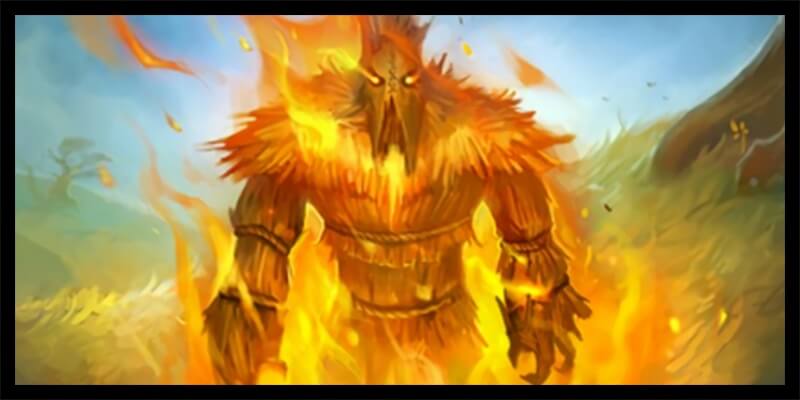I’ve been in love with Tempo Mage ever since I watched Inderen play the midrange pre-Flamewaker version in ESL Katowice.
The deck offers the ability to get unstoppable opening draws, as well as the possibility of grinding out control matchups. Since Blackrock Mountain introduced Flamewaker, the deck has turned away from its midrange roots and into what I would consider more-or-less an all-in aggro strategy. The Grand Tournament offers some interesting new possibilities for both the aggressive and midrange versions of Tempo Mage. Others have already hyped the aggro version with Spellslingers and Kirin Tor Mage + Effigy. I want to discuss some of the logic behind the list I will be starting with for midrange Tempo Mage.
The Skeleton
These cards are what I would regard as the skeleton of midrange Tempo Mage. They provide an efficient start that curves into high value threats, as well as a significant amount of burn to either close out games or maintain board control.
Fueling Flamewaker
Pre-Flamewaker Tempo Mage games could be curious to watch, since the Mage keeps a very low hand size in the late game, and yet somehow can manage to continuously top deck cards that maintain board control and pressure. What made that possible was a decklist packed with extremely high value (or high potential value) cards.
The introduction of Flamewaker solved several of the major problems with that deck: trouble dealing with lots of small aggressive minions, and lack of a strong three-cost minion. At the same time, though, it created a new problem: a lack of cheap spells that could be saved to combo with Flamewaker. Current Flamewaker lists solve the problem either by including cheap, low-value spells like Mirror Image and Arcane Missiles, or by including spare part generating cards like Clockwork Gnome and Mechanical Yeti. Suddenly, Flamewaker gives the deck the possibility of exploding into massive amounts of damage, but no longer can the deck keep pace with control decks into the late game, since many top-decks will be dead draws.
Mirror Image, I like quite a bit, because it can delay the game by a turn or more against aggressive decks, and protect damage dealing threats from removal by control decks. Flamewaker and Archmage Antonidas basically provide enough powerful synergy to justify running a card that would have been useful anyway, but too situational otherwise.
Arcane Missiles, on the other hand, I have never liked. Generally, it is a bad idea to include bad cards in a deck because they synergize with a strong card, and Arcane Missiles gives me that feeling. It is mainly included because it is a not-terrible 1-mana spell (2 Mirror Images is too much), not because Arcane Missiles itself is so strong. If there were a more useful card that fit in that slot, I suspect most players would run it instead.
Arcane Blast and Bloodmage Thalnos
The Grand Tournament provides several new Mage cards that can potentially help fuel Flamewaker while maintaining a value-dense Tempo Mage decklist. First among them: Arcane Blast.
Arcane Blast, despite its breathtaking art, has gotten mixed reviews. My initial impression was extremely positive, but after the other players on my card discussion stream reviewed it negatively, I tempered my enthusiasm. Is it good? I honestly won’t know until I test it, but I think there is strong logic in replacing Arcane Missiles with Arcane Blast.
The pre-Flamewaker Tempo Mage list typically ran either 1 or 2 Flamecannons, which was extremely strong against decks with a few mid-sized or large minions (common in the meta at the time). Now that boards with many small tokens are common, Flamecannon is much weaker. Arcane Blast, combined with spell damage, is like a targetable Flamecannon. At 1 mana, it is an excellent trigger for Flamewaker or Archmage Antonidas, and it can serve as early removal against fast aggro decks like Paladin and Mech Shaman.
Given Arcane Blast’s spell damage bonus, it makes sense to include Bloodmage Thalnos, to enable efficient removal. Bloodmage has other benefits, though. It increases the reach of the deck to kill opponents using burn spells, and it synergizes with Rhonin, since three copies of Arcane Missiles means +3 damage from Thalnos. The cycle from Bloodmage Thalnos also helps make up for the inclusion of 1-mana spells in the decklist, so that the overall gameplan of top-decking high value cards is not diluted too much.
Effigy
Effigy might be the best card of The Grand Tournament. In the early game, it turns every minion into a super-Piloted Shredder, and in the late game, it functions as an anti-BGH/Execute, countering cheap removal by re-summoning a major threat for similar cost to the removal (perhaps Ben Brode read this article). The only way to play around Effigy is to never initiate trades, so it works perfectly for Tempo Mage, a deck that is comfortable seizing initiative on the board and forcing the opponent to react.
It is worth pointing out that, formerly, using Recombobulator (or, now, Effigy) on a 5-mana or 7-mana minion was particularly bad, due to the relative prevalence of minions in those slots with weak base stats and powerful battlecries. While the 7-drops haven’t gotten much better, the 5-drops have improved a bit relative to the 4s and 6s, thanks to the introduction of new strong vanilla 5s like Pit Fighter, Tuskarr Jouster, and Clockwork Knight. Also, note that Inspire minions like Murloc Knight, Kvaldir Raider and Nexus-Champion Saraad will be excellent off of Effigy, since you will often want to hero power anyway, and Effigy is already a tempo gain.
That means it is probably okay that this decklist runs more 5-drops than 4s or 6s, and you won’t be that sad to have Effigy trigger on a Sludge Belcher. That said, it is worth considering whether Effigy synergy is important enough to run a 6-drop threat instead of Dr. Boom — not only are 7-drops relatively weak, you really don’t want Effigy to trigger on a Boom Bot.
To explore the possibilities of Effigy in depth, check out this amazing tool from Hearthstone Top Decks!
Rhonin
Many players have been disappointed that Rhonin’s effect is a deathrattle, not a battlecry. To be sure, immediately getting 3 copies of Arcane Missiles would be powerful. But don’t let the card that might have been blind you to the card that is! Rhonin isn’t a spell to create 3 Arcane Missiles (good!) and, oh, by the way, summon an irrelevant, disposable BGH target. A good chunk of the mana you pay for Rhonin goes into his 7/7 body, and the deathrattle helps to make the body relevant.
Getting 3 copies of Arcane Missiles is obviously hugely scary. It amounts to a 3-mana cheaper Avenging Wrath, which gets 3x spell damage, and triggers Flamewaker and Archmage Antonidas 3 times. Since any deck running Rhonin will be built to take full advantage of that synergy, triggering Rhonin’s deathrattle will be terrifying to opponents. Often, they may feel better equipped to deal with a 7/7 on the board than potentially huge burst damage from burn spells.
Effigy helps Rhonin’s body even more, because at 8-mana, every single minion from Effigy is a potentially game ending threat. Killing Rhonin with a secret up, your opponent risks summoning a 3 mana Ragnaros the Firelord, Kel’Thuzad, or Al'Akir the Windlord. With Rhonin, you can put your opponent between the jaws of two win conditions: a 7/7 that gets more powerful if you kill it, and an unknown but potentially massive amount of burst damage if you manage to deal with the 7/7 body.
Tech Choices
Tech cards depend on the meta, so right before an expansion it is folly to speculate too much, and early in an expansion, when the meta is chaotic, it is usually a bad idea to run much tech at all.
That said, we need a third secret, and there are two main candidates: Mirror Entity and Counterspell. Cards like Duplicate and Ice Barrier are secondary considerations, since, while they are strong cards, they do not contribute to tempo. Mirror Entity is excellent against decks like Druid and Rogue that depend on dropping a few strong minions for board control. Unfortunately, players have gotten quite good at playing around Mirror Entity, and some decks can punish it quite hard. Counterspell is great at shutting down decks that run only a few extremely important spells — Paladin, for example.
I chose Counterspell for my initial list because I suspect that burn-based combo decks could be common in The Grand Tournament.
Freeze Priest has already shown some competitive promise, and with the introduction of Flash Heal and Shadowfiend, a One-Turn-Kill burn Priest seems like a potentially strong archetype. Malygos Shaman also seems poised to see competitive play, with powerful spells like Healing Wave and Elemental Destruction aiding its consistency and survivability. Even Hunter could end up with a combo burn deck, if King’s Elekk, Lock and Load, and Malygos turn out to be long-lost lovers. A well-timed Counterspell could help Tempo Mage delay enough to achieve victory against these strategies.
Flamestrike is a bit out of place in a tempo deck, since it is too expensive to develop the board on the same turn you play it, but I expect Patron Warrior and Zoo to continue to be prevalent, and Flamestrike is a necessity against both of these decks. Note that Thalnos can be played on the same turn for a 5-damage Flamestrike. It is a bit scary cutting a Sludge Belcher, since midrange Tempo Mage already tends to struggle with fast aggro decks. Only time will tell what strategies are popular enough to demand counterplay.
It could easily turn out that midrange Tempo Mage gets stomped on in the upcoming meta. Such predictions are for prophets and tabloid reporters. I am content that the new cards breathe life into one of my favorite decks. In the words of the great Hearthstone player Obi-Wan Kenobi:
Your father’s midrange Tempo Mage. This is the deck of a Jedi Knight, not as clumsy or random as an aggro Mage. An elegant deck for a more civilized meta.
Shevek streams Sun, Mon, Wed, and Thu evening (Pacific time) at twitch.tv/shevek18.
You can follow him on Twitter @Shevvek. He plays for @RudeHouseGaming.





